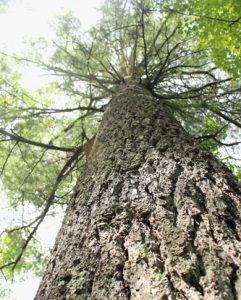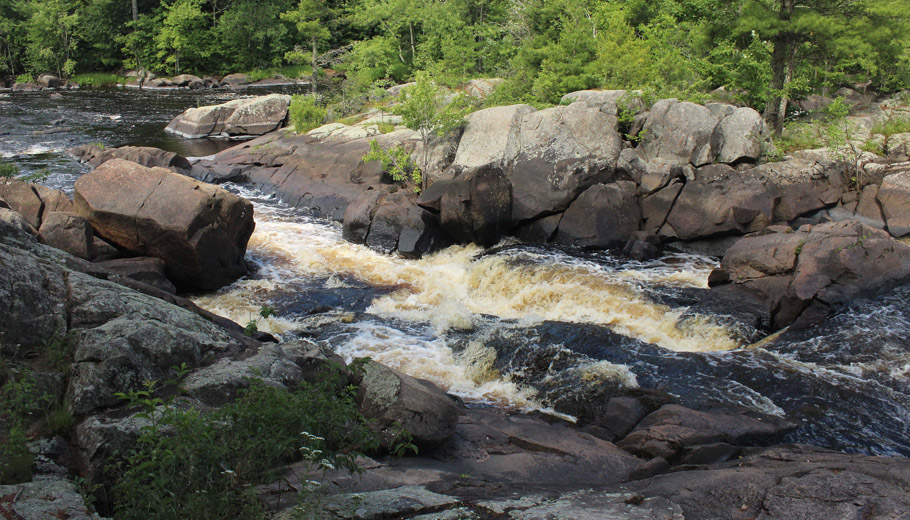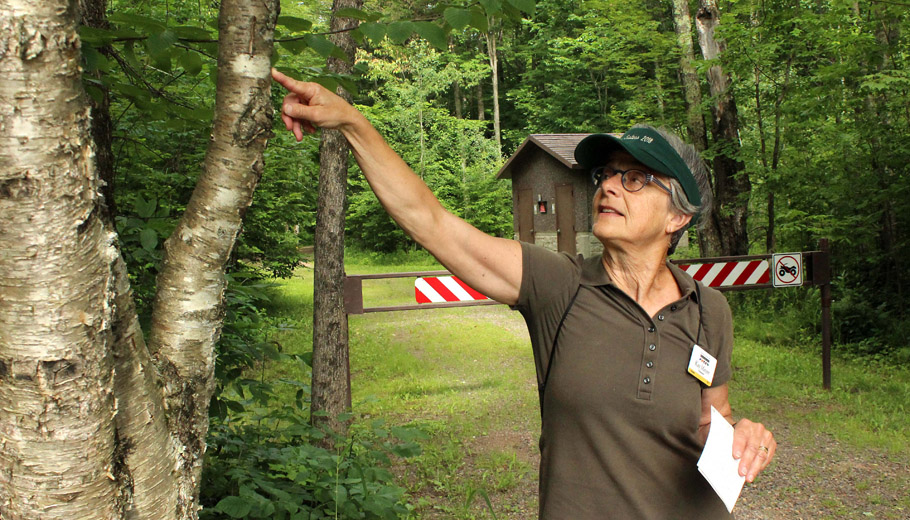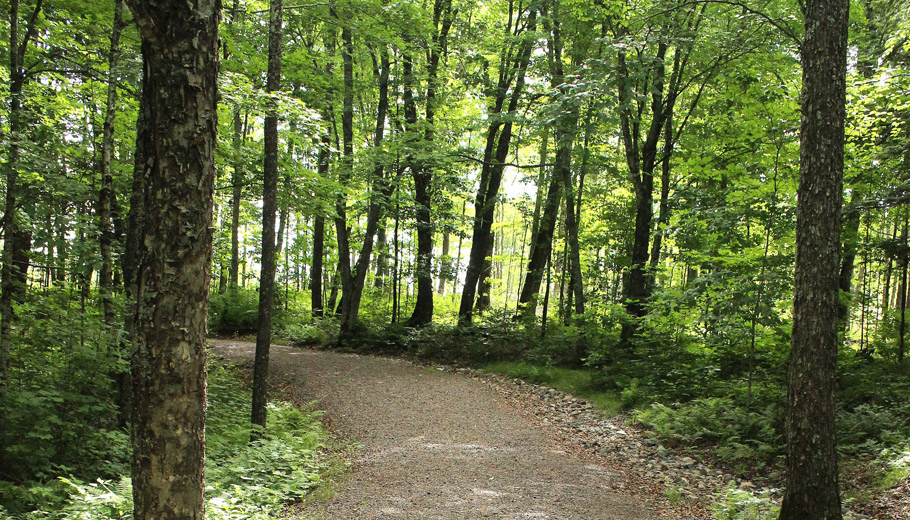Heading north to Flambeau River
By Greg Seubert
It’s probably not on most vacation destination lists, but the Flambeau River State Forest should be.
Covering more than 90,000 acres in northern Wisconsin’s Sawyer, Price and Rusk counties, the forest is the second-largest state-owned property and includes 75 miles of the Flambeau River’s north and south forks.
Both stretches of the river – especially the South Fork – have been popular with canoeists and kayakers for years. One of the most popular stretches of whitewater is the Little Falls/Slough Gundy area on the South Fork. A parking area is located on County Trunk M, about halfway between U.S. Highway 8 and County Trunk W. A canoe and kayak landing is located at the County M bridge, about a mile north of the parking lot.
Kay Meyer led a hike to the area July 13 that included visits to Little Falls, a Class V rapids, and Slough Gundy, a stretch of river upstream with Class II and Class III rapids.
She and her husband live in Wausau and have a cabin about an hour away from the forest near Hayward.
“We’ve been going up to the Birkebeiner every winter for 40 years,” said Meyer, who grew up in Bonduel. “My dad was quite a sportsman. He made many trips to the Flambeau area for the fish and maybe some hunting.”
Meyer’s group included three hikers. Besides leading them to both rapids on the river, she also pointed out some of the area’s unique plants, including several large hemlocks and white pines and a number of different species of ferns.
“When I was a little kid growing up in Bonduel, we’d always go to the outskirts of town to the creek during the summer,” she said. “I was an explorer. As an adult, I realized that earth is unique and how fortunate we are to live on earth. As long as we have that tiny amount of time to be here, I want to be out there and enjoy every minute I can.”
Master Naturalist training

Greg Seubert Photo
Meyer attended a Wisconsin Master Naturalist Program volunteer training course at the Cable Natural History Museum in Cable in June 2017.
The course is a 40-hour series of classes and field trips that covers geology, ecology, plant communities, wildlife, interpretation, water, water life and human impacts through lectures and field trips with local experts.
Another volunteer training class will be held Monday to Saturday, Aug. 5-10, at Hartman Creek State Park near Waupaca.
“I took it in one week,” Meyer said. “Our cabin made it easy for me to do that. The Cable Natural History Museum has an excellent reputation, so I was happy doing it there. They bring in a lot of professors from Northland College in Ashland and all over. We got such a good overview. I think there were 24 (participants) and they were from all over. I am so glad I did it.”
Master Naturalists are required to complete eight hours of advanced training and provide 40 hours of service each year to maintain their certification.
The tour was part of Meyer’s 40 hours of service.
“A lot of people will just take the class for the information they get there and then be done with it,” she said. “If you want to continue to be a Master Naturalist, they offer advanced classes. They want you to participate 40 hours a year in three different areas: education, citizen science and stewardship.
“Education is giving talks to adults and children, kind of like I did today,” she said. “There are so many opportunities in Wisconsin to participate in citizen science if it’s frogs or dragonflies or birds or mushrooms or bats. You can count them, you can observe them, you can record them. The opportunities are endless. Stewardship is maybe my favorite thing. I like to get rid of invasives or make a place more beautiful. That’s where I try to do my volunteer hours. It’s how I love spending my retirement.”
Meyer has also volunteered in other areas of the state.
“I have done some duck hunter education in the fall as they put in their boats at the Mead Wildlife Area,” she said. “I worked at Shawano Lake last year checking for invasives at various landings and we did find a number of them.”
Meyer has some advice for anyone thinking of signing up for the Master Naturalist course, which are held throughout the state.
“I would say, ‘Don’t hesitate, do it right away,’” she said. “The information you get in the classes you will use for the rest of your life. You also meet people who are nature geeks just like you and that is wonderful. With the connections you have with people, you find out so much more and find out about so many more places to enjoy Wisconsin.”
State campgrounds
Besides canoeing and kayaking, the state Department of Natural Resources also operates campgrounds on Connors Lake and Lake of the Pines, as well as a picnic area on Connors Lake on County W. The forest headquarters are located at W1613 County W, Winter, where the highway crosses the North Fork.
The forest also has 14 designated riverfront campsites for paddlers on the North Fork, with five of them located north of County W.
There are also four canoe and kayak landings on the North Fork; one on the South Fork; and two on the Flambeau River south of where the two forks meet.
North Fork landings can be found on State Highway 70 (Nine Mile), Oxbo Drive (Dix Dox), County W and Camp 41 Road (Camp 41). The South Fork landing on County M is known as Fisherman’s Landing. The Flambeau River launches are on Hervas and Beaver Dam roads.
“If you’re looking for those off-the-beaten path places, they’re just an hour or two away or maybe four, but they are here,” Meyer said. “You just have to look for them.”



